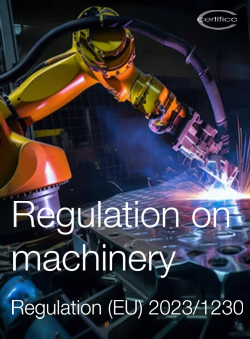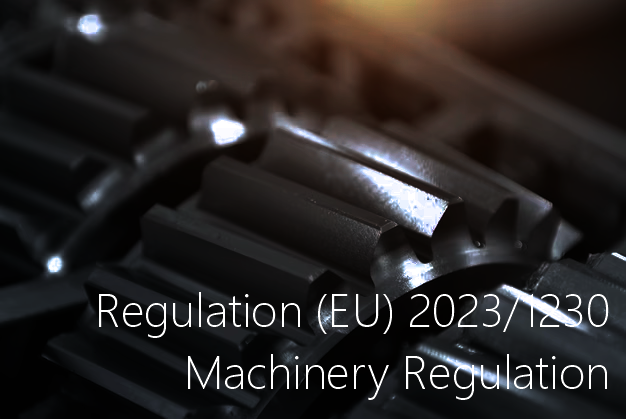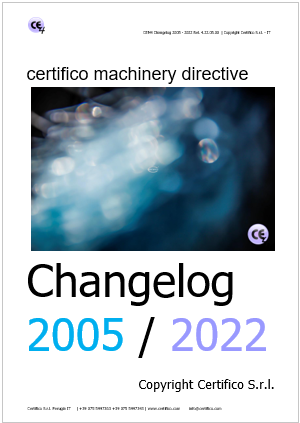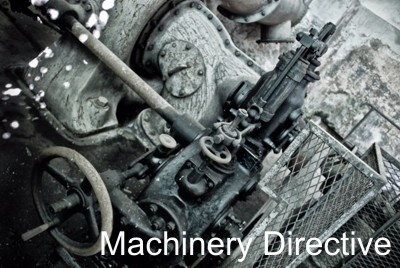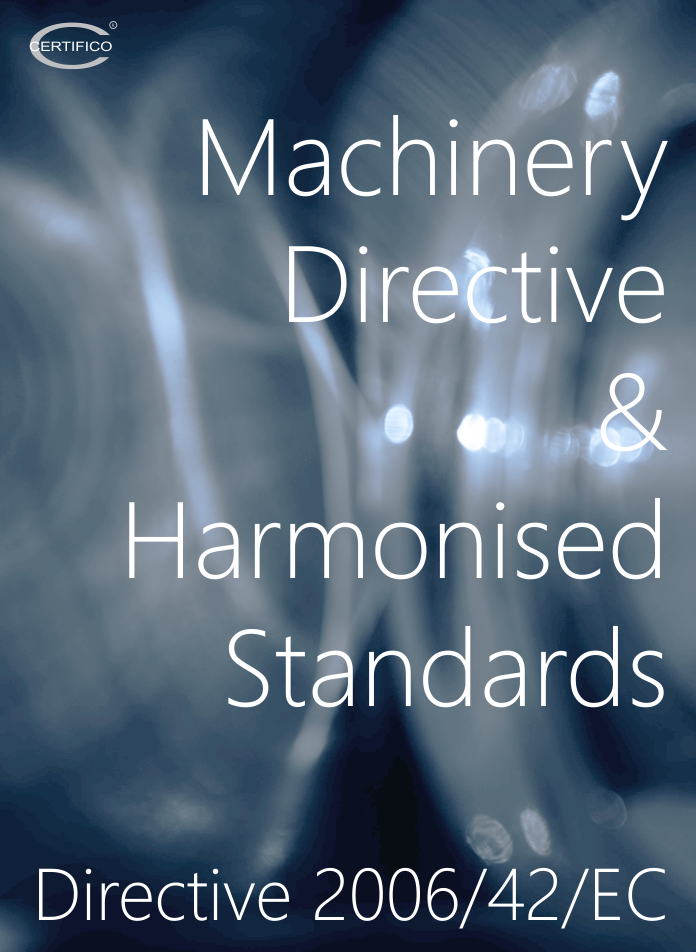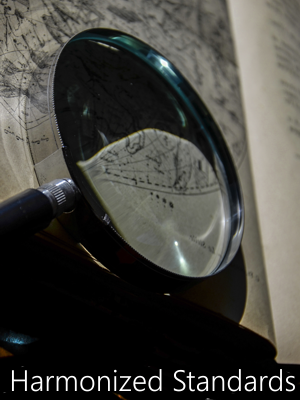Proposal for a Regulation on machinery products
Proposal for a Regulation of the European Parliament and of the Council on machinery products
Update 20.10.2021 / Proposal 2021 Regulation machinery products
EC, 20.10.2021
In attachment:
- COM(2021) 202 - Proposal for a Regulation of the European Parliament and of the Council on machinery products
- COM(2021) 202 ANNEX - Annex to the Proposal for a Regulation of the European Parliament and of the Council on machinery products
- SWD(2021) 82 - Impact assessment
- SWD(2021) 83 - Executive summary of the Impact assessment
The Machinery Directive (hereafter ‘MD’) establishes a regulatory framework for placing machinery on the Single Market, based on Article 114 of the TFEU (the approximation of laws. The general objectives of the MD are to: i) ensure free movement of machinery within the internal market; and ii) ensure a high level of protection for users and other exposed persons. The MD follows the ‘new approach’ principles of EU legislation. It is intentionally written to be technology neutral, which means that it lays down the essential health and safety requirements (hereafter ‘safety requirements’) to be complied with, without prescribing any specific technical solution to comply with those requirements. The choice of the technical solution is a prerogative of manufacturers, which leaves space for innovation and new design development.
During the REFIT evaluation of the directive, all interested parties confirmed it is an essential piece of legislation although it identified a necessity to improve, simplify and adapt the MD to the needs of the market. Some Members of the European Parliament’s expressed their support to the revision of the Machinery Directive. In particular, by ‘taking the legislation’ to the XXI century and promoting innovation for the EU economy.
As part of the Commission Work Programme 2020 under the priority ‘A Europe fit for the Digital Age’, the revision of the product safety Directive 2006/42/EC on Machinery (MD) contributes to the digital transition and to the strengthening of the Single Market. Indeed, regarding new technologies and their impact on safety legislation, the Commission has published in February 2020 a White Paper on Artificial Intelligence accompanied by a ‘Report on the safety and liability implications of Artificial Intelligence, the Internet of Things and robotics’. The Report, which has conducted an analysis of the impact of new technologies and the challenges they pose to Union safety legislation, concluded that the current product safety legislation contains a number of gaps that need to be addressed, in particular, among other, in the Machinery Directive. This is even more relevant for a sustainable recovery from the COVID pandemic, since the machinery sector is an essential part of the engineering industry and one of the industrial mainstays of the EU economy.
In view of dealing with the elements highlighted in the evaluation and developed in the impact assessment report of the machinery directive5, as well as responding to the Commission policy objectives on digitalization, this proposal expects to tackle the following problems:
In order to boost the trust in digital technologies, the MD needs to provide legal certainty as regards those technologies, existing gaps could hinder a level playing field for manufacturers, which would impact the efficiency of the MD.
There are several aspects that need to be addressed within this problem. The first one relates to the potential risks that originate from a direct human-robot collaboration as the collaborative robots (co-bots) that are designed to work alongside human and employees are exponentially increasing. A second source of potential risk originates from connected machinery. A third area of concern lies with the way software updates affects the ‘behaviour’ of the machinery after its placing on the market. A fourth concern relates to the ability of manufacturers to conduct a full risk assessment on machine learning applications before the product is placed on the market. Finally, as far as the autonomous machines and remote supervisory stations, the current MD foresees a driver or an operator responsible for the movement of a machine. The driver may be transported by the machinery or may be accompanying the machinery, or may guide the machinery by remote control, but does not consider the possibility of no driver, and sets up no requirements for autonomous machines.
Problem 2:
(i) Legal uncertainty due to a lack of clarity on the scope and definitions; and
(ii) possible safety gaps in traditional technologies.
The MD needs greater legal certainty in its scope and definitions, which generated some difficulties for manufacturers to understand the correct legal framework they should apply.
Some overlaps or inconsistencies with other EU specific legislation were identified. With respect to the definitions set by the Directive, the definition of 'partly completed machinery' raised a number of concerns particularly centred at the borderline with the definition of 'machinery' and the definition of ‘machinery’ has been clarified. Besides, there is a need to clarify the exclusion of means of transport and to reinforce the coherence of the exclusion of some products covered by the Low Voltage Directive 2014/35/EU when those products integrate a Wi-Fi function.
Furthermore, it is a common practice that machines placed on the market are modified in order for example to add a function or improve the performance. The problem is that if the machine suffers a substantial modification, without the manufacturer’s agreement, may be not in conformity any longer with the essential health and safety requirements. The current MD does not address this situation.
There are a number of requirements on traditional technologies not related to new technologies that were identified either as not clear or safe enough, or as too prescriptive and potentially hindering innovation. These requirements are related to installation of lifting appliances, slow speed lifts, seating, protection against hazardous substances, overhead power lines and vibration from portable handheld and hand guided machinery.
Problem 3: Insufficient provisions for high risk machines.
The third party conformity assessment is considered by some Member States and stakeholders more adapted to address the high risks stemming from certain groups of machines.
Another problem is that the current list of high-risk machines in Annex I was elaborated 15 years ago, and the market has much evolved since then. It is necessary to remove machines no longer considered high risk and/or introducing new ones (such as machinery embedding AI systems, which fulfil a safety function).
Problem 4: Monetary and environmental costs due to extensive paper-based documentation.
The MD requires manufacturers to provide the necessary machinery information, such as instructions. To ensure that every machine user has access to the instructions, providing a printed version was considered as the most viable option. Since then, however, the use of the internet and digital technologies has increased. The requirement to provide printed versions increases the costs and administrative burdens for economic operators and has a negative impact on the environment. However, it must be also considered that some users are less digitally savvy, there is a lack of internet access in certain environments and the digital manual might not match the version of the product.
Problem 5: Inconsistencies with other pieces of Union product safety legislation.
The New Legislative Framework is a package of measures aimed at brought together all the elements required for a comprehensive regulatory framework to operate effectively for the safety and compliance of industrial products with the requirements adopted to protect the various public interests and for the proper functioning of the single market. A main objective of the Commission is to bring product harmonisation legislation in line with the reference provisions of Decision 768/2008/EC. While the Machinery Directive is already a New Approach directive, it is not yet aligned to the NLF.
The lack of MD’s alignment to the NLF creates inconsistencies with other EU product legislation.
Problem 6: Divergences in interpretation due to transposition.
The fact that the current machinery legislation is a Directive leaving Member States to choose the means to comply with the legislative objectives, has led to different interpretations of the MD provisions creating legal uncertainty and lack of coherence throughout the single market.
Furthermore, there have been delays in the transposition of the Directive in some Member States.
Fonte: EC
Add more e download
- Published: 21 April 2021
- Hits: 13335











